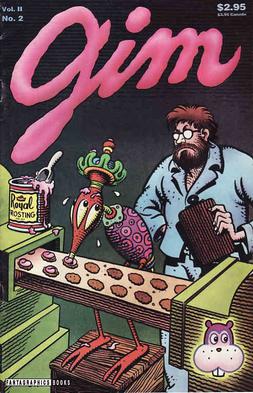
Jim is a comic book series by Jim Woodring. It began in 1980 as a self-published zine and was picked up by Fantagraphics Books in 1986 after cartoonist Gil Kane introduced Woodring to Fantagraphics co-owner Gary Groth. The publisher released four magazine-sized black-and-white issues starting in September 1987. A comic book-sized continuation, Jim Volume II, with some color, began in 1993 and ran for six issues until 1996.
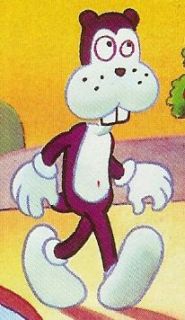
Frank is a cartoon character created by American cartoonist Jim Woodring. Frank is a bipedal, bucktoothed animal of uncertain species whom Woodring described as a "generic anthropomorph". The stories and supporting characters appear in a world called the Unifactor.
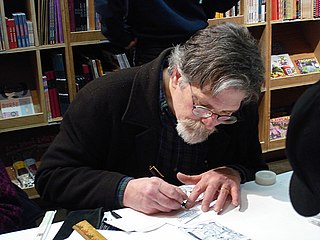
James William Woodring is an American cartoonist, fine artist, writer and toy designer. He is best known for the dream-based comics he published in his magazine Jim, and as the creator of the anthropomorphic cartoon character Frank, who has appeared in a number of short comics and graphic novels.
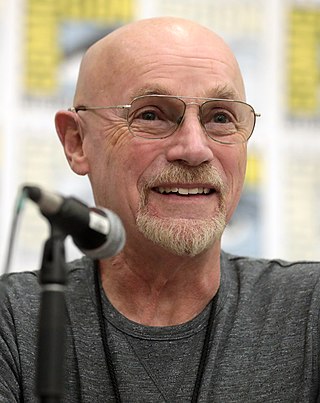
James P. Starlin is an American comics artist and writer. Beginning his career in the early 1970s, he is best known for space opera stories, for revamping the Marvel Comics characters Captain Marvel and Adam Warlock, and for creating or co-creating the Marvel characters Thanos, Drax the Destroyer, Gamora, Nebula, and Shang-Chi, as well as writing the miniseries The Infinity Gauntlet and its many sequels including The Infinity War and The Infinity Crusade, all detailing Thanos' pursuit of the Infinity Gems to court Mistress Death by annihilating half of all life in the cosmos, before coming into conflict with the Avengers, X-Men, Fantastic Four, and the Elders of the Universe, joined by the Silver Surfer, Doctor Strange, Gamora, Nebula, and Drax.

Daniel P. Abnett is an English comic book writer and novelist. He has been a frequent collaborator with fellow writer Andy Lanning, and has worked on books for both Marvel Comics, and their UK imprint, Marvel UK, since the 1990s, and also 2000 AD. He has also contributed to DC Comics titles, and his Warhammer Fantasy and Warhammer 40,000 novels and graphic novels for Games Workshop's Black Library now run to several dozen titles and have sold over two million copies. In 2009 he released his first original fiction novels through Angry Robot books.

Benjamin Franklin Thorne was an American comic book artist-writer, best known for the Marvel Comics character Red Sonja.
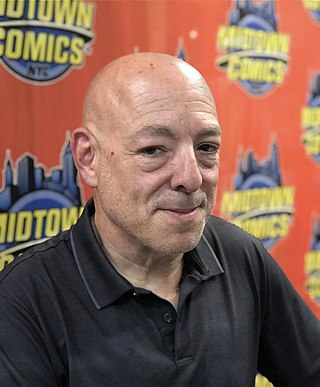
Brian Michael Bendis is an American comic book writer and artist.

Stephen Ross Gerber was an American comic book writer and creator of the satiric Marvel Comics character Howard the Duck. Other works include Man-Thing, Omega the Unknown,Marvel Spotlight: "Son of Satan", The Defenders,Marvel Presents: "Guardians of the Galaxy", Daredevil and Foolkiller. Gerber often included lengthy text pages in the midst of comic book stories, such as in his graphic novel, Stewart the Rat. Gerber was posthumously inducted into the Will Eisner Comic Book Hall of Fame in 2010.

Howard Victor Chaykin is an American comic book artist and writer. Chaykin's influences include his one-time employer and mentor, Gil Kane, and the mid-20th century illustrators Robert Fawcett and Al Parker.

Craig Matthew Thompson is an American graphic novelist best known for his books Good-bye, Chunky Rice (1999), Blankets (2003), Carnet de Voyage (2004), Habibi (2011), and Space Dumplins (2015). Thompson has received four Harvey Awards, three Eisner Awards, and two Ignatz Awards. In 2007, his cover design for the Menomena album Friend and Foe received a Grammy nomination for Best Recording Package.

All Star Batman & Robin the Boy Wonder is an American comic book series written by Frank Miller and penciled by Jim Lee. It was published by DC Comics, with a sporadic schedule, between 2005 and 2008. The series was to be rebooted under the title Dark Knight: Boy Wonder in 2011, when both Miller and Lee were to finish the last six issues. The series retells the origin story of Dick Grayson, who became Batman's sidekick Robin.

Kevin Grevioux is an American actor, screenwriter, director, and comic book writer. He is best known for his role as Raze in the Underworld film series, which he co-created, as well as his voicework in the cartoon Young Justice as the villain Black Beetle.
A script is a document describing the narrative and dialogue of a comic book in detail. It is the comic book equivalent of a television program teleplay or a film screenplay.

Mike W. Barr is an American writer of comic books, mystery novels, and science fiction novels. Barr has written for every one of the first four incarnations of Star Trek: Star Trek, Star Trek: The Next Generation, Star Trek: Deep Space Nine and Star Trek: Voyager, in either comic book or other media.
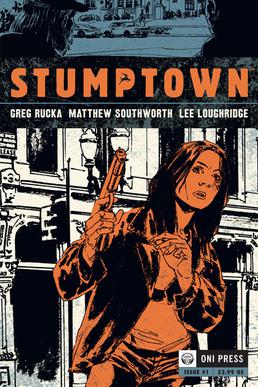
Stumptown is an American comic book limited series and later ongoing, written by Greg Rucka with art by Matthew Southworth. The first series launched by Oni Press on November 4, 2009, and ran for four issues. A second miniseries began in September 2012 and ran for five issues and a third volume, this time ongoing, began in September 2014.
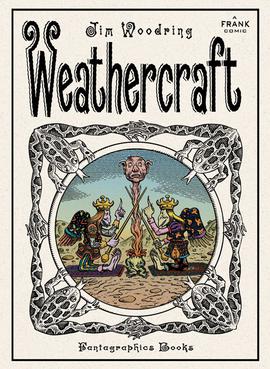
Weathercraft is a 2010 graphic novel by American cartoonist Jim Woodring, featuring his best-known characters Frank, Manhog and Whim. While Frank stars in most of Woodring's stories set in the fictional universe of the Unifactor, this book stars Manhog, with Frank making only a brief appearance. Manhog, after trials and tribulations, sets out on a transformative journey, returning to face off against the devilish Whim, who has enslaved and transformed his friends. Like all other stories set in the Unifactor, Weathercraft unfolds entirely in pictures, with no dialogue balloons or captions. Weathercraft was Woodring's first book-length work.

Jillian Tamaki is a Canadian American illustrator and comic artist known for her work in The New York Times and The New Yorker in addition to the graphic novels Boundless, as well as Skim, This One Summer and Roaming written by her cousin Mariko Tamaki.

The wordless novel is a narrative genre that uses sequences of captionless pictures to tell a story. As artists have often made such books using woodcut and other relief printing techniques, the terms woodcut novel or novel in woodcuts are also used. The genre flourished primarily in the 1920s and 1930s and was most popular in Germany.
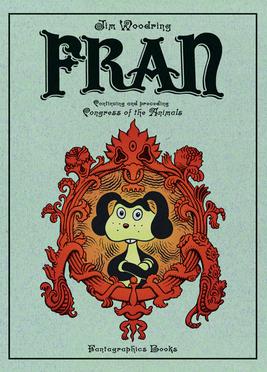
Fran is a graphic novel by American cartoonist Jim Woodring released in 2013. The wordless book is the third Frank graphic novel, following Weathercraft (2010) and Congress of the Animals (2011). After the anthropomorphic Frank violently loses his self-control with his secretive female counterpart Fran, whom he discovered at the end of Congress of the Animals, she leaves him, and he sets out in search of her.


















